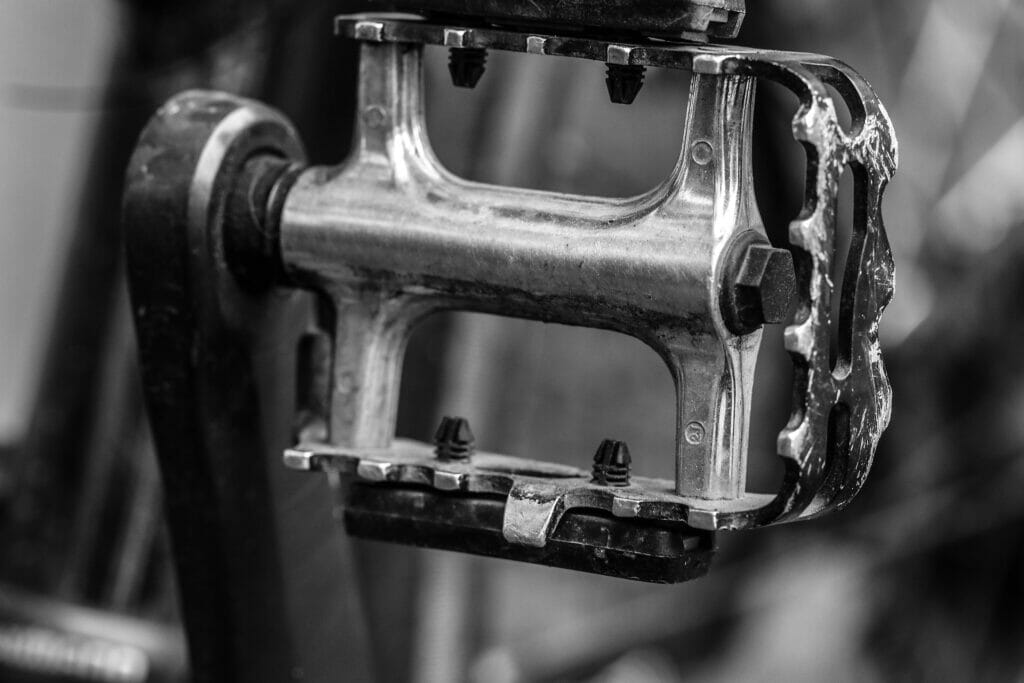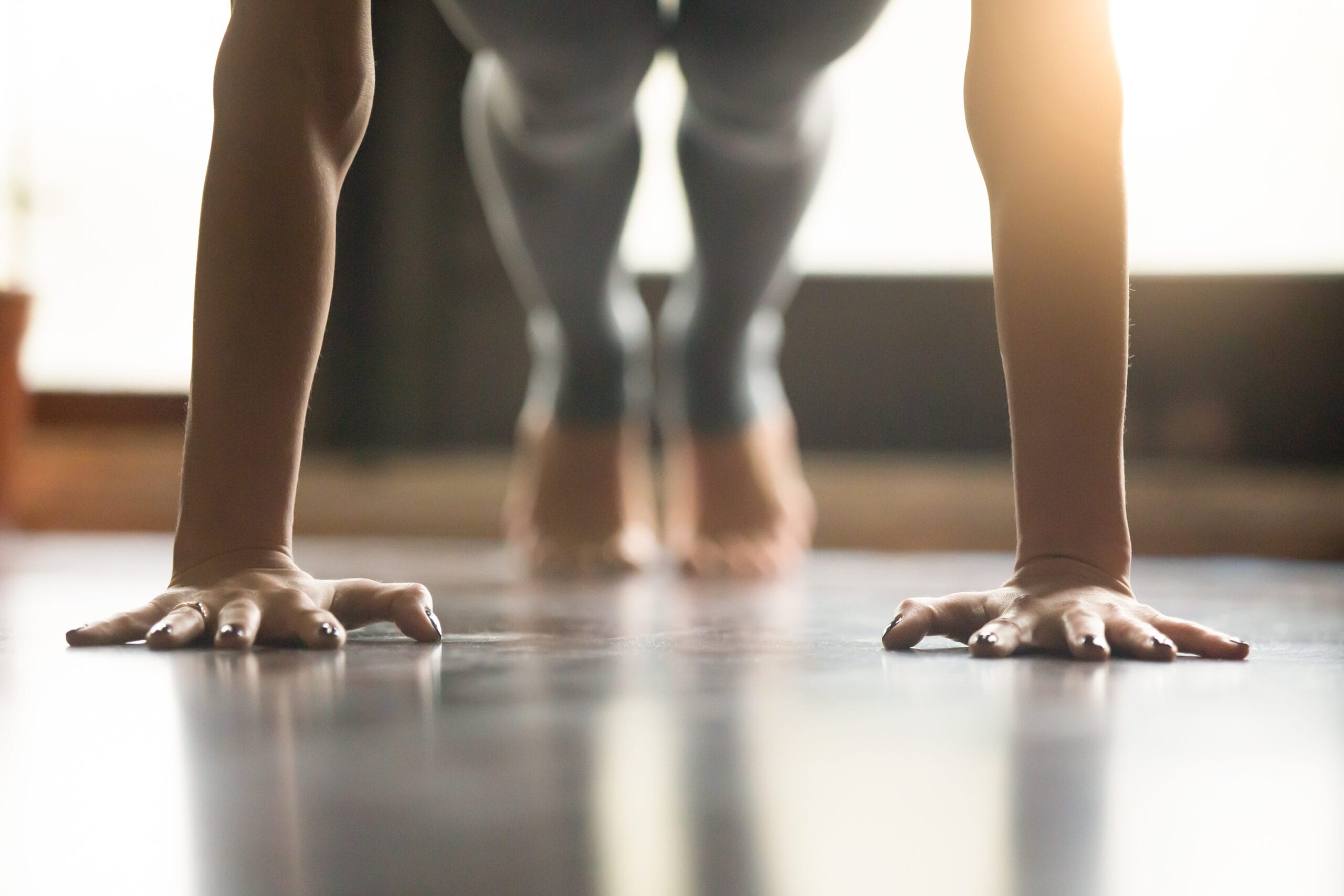
If you’ve been researching spin cycles you may have come across the ongoing discussion regarding Q factors. More specifically, is having a smaller Q factor beneficial to having a larger one.
There are really 2 schools of thought here:
1) having a smaller Q factor is preferred because it puts less stress through your joints, or
2) it doesn’t matter in the slightest
Well, I’ve received some questions from readers recently regarding this topic, so I figured it was time for me to add my 2 cents to the discussion (for whatever that may be worth).
Long-story-short, my personal opinion coincides more closely with school of thought #2, but I know there are exceptions.
In this article, I want to first review what a bike’s Q factor is to begin with and then examine the arguments behind each thought process.
Let’s start at the beginning.
What Is A Bike’s Q Factor Anyway?
The term “Q factor” sounds very sciency to me, but it’s really just the distance between the 2 pedals.
And that’s measured as the horizontal distance between where the petal meets the crank arm on one side to where the other petal meets the other crank arm on the other side.
Technically, all road bikes and I guess all exercise bikes would have a Q factor, but you’ll only really hear about it in terms of exercise bikes when talking about spin cycles.
This is because spin cycles are designed to mimic the feel of road bikes more than any other type of exercise bike.
As much weight as some folks give this spec, you might be surprised that a lot fitness brands don’t even display the Q factors for their bikes.
(I’m guessing these brands are more into school of thought #2 mentioned in the intro).
Others, especially if their bikes come with especially small Q factors, will market them as such.
But what counts as a small Q factor anyway?
That’s a great question.
Your average road bike as a Q factor of about 150 mm and your average mountain bike has a Q factor of about 170 mm.
So when it comes to spin cycles, I would consider anything with a Q factor between 150 – 170 to be pretty small (or narrow).
When thinking about exercise bikes, it makes sense that they would come with Q factors that are a little wider than those seen on road bikes.
This is because of the housing, resistance systems, and whatnot that require a slightly wider frame than a road bike might have.
Ok, now that we’re all on the same page regarding what the Q factor actually refers to, let’s dig a little deeper.
Possible Benefits Of A Narrow Q Factor
When people start asking or complaining about a spin cycle’s Q factor, it generally boils down to comfort- many believe that a smaller Q factor makes for a more comfortable workout.
The idea is that having the pedals closer together (which is what a small Q factor depicts) results in less stress being put through your joints (primarily your knees) as you pedal.
As a physical therapist, I can appreciate this.
I can visualize and understand that as your feet get farther apart, you’re more likely to get more unwanted lateral stresses through your knees.
And I can see how this increased lateral stress could lead to increased knee pain over time.
And if you’re an elite cyclist who is training indoors on a spin cycle with the specific goal of mimicking the feel of riding a road bike, of course it makes sense to go with a narrow Q factor.
After all, road bikes have narrow Q factors (around 150 mm).
Another benefit of having a narrow Q factor is increased performance. Elite riders tend to show improved power and efficiency when the pedals are closer together.
Again, I can see how this would be beneficial for elite cyclists.
But if you go too narrow, you lose this benefit and can actual inhibit performance (same goes for comfort- if the Q factor is too small, you can put unwanted stress the other way).
Q Factors In The Real World
Ok, so I just mentioned the 2 biggest reasons to opt for an exercise bike with a narrow Q factor- increased comfort and better performance.
But I wanna take a small step back for a sec and dig a little deeper.
A narrow Q factor might be more comfortable for some riders, especially elite cyclists, but it’s not going to be comfortable for everyone.
We’re all different shapes and sizes.
And I would argue that larger folks, with wider pelvises (is that the right word? “pelvi” doesn’t seem right) might even prefer a wider Q factor.
Let’s face it- most of us aren’t the same size as elite cyclists.
Elite cyclists are often thin and narrow- and that’s kinda the opposite shape of a lot of us home gymers.
So, unless you’ve been fitted for a bike and know that you are more comfortable with a small Q factor (or you have a really narrow frame), I wouldn’t stress over the Q factor when looking for a spin cycle.
Moving on to performance- if you are specifically looking to replicate the feel of riding your road bike, then it makes sense to find a cycle with a narrow Q factor.
But if you aren’t, I don’t think the Q factor is going to make a big difference.
There, I said it.
A few millimeters here or there isn’t going to affect your average recreational rider’s performance enough to matter.
I mean, if you’re riding to lose weight or stay in shape, does it really matter if your output is 1% less efficient?
And how often does your average home rider use their spin cycle? 2-3x a week? 4x?
Honestly, I doubt it’s that high, but let’s be optimistic and say 3x/week just for our example here.
I don’t think riding for 30 min or so, 3x/week with a wider Q factor is going to cause enough stress on most healthy people’s knees to cause any problems.
Maybe if you’re riding for an hour at a time and going 5x a week, then maybe the micro traumas would be enough to cause unwanted damage.
But I bet most average, healthy individuals could comfortably hop on a spin cycle and ride comfortably regardless of what the Q factor is.
Which brings me to another point- when we’re talking about narrow or wide Q factors, we’re talking about millimeters here people…millimeters.
When I hear recreational home cyclers nitpicking over wether the bike has a 177 mm Q factor or a 200 mm Q factor I have to admit- who cares?
I don’t think the average person is going to notice any difference between the 2 (all other things being equal).
23 mm is less than an inch and when you think about each foot’s position from midline, it’s half that difference for each foot…
Final Thoughts
Ok, I’m gonna wrap this thing up before I piss too many cyclists off, but my point is I think we tend to put too much emphasis on a spin cycle’s Q factor.
I don’t think this spec really matters for the majority of us home gymers.
When it comes to elite cyclists and folks who wanna put some serious weekly miles on their cycles, well, then it probably matters a little more.
And in that case, by all means find yourself a cycle with the narrowest Q factor you can.
And people who already have knee issues or who are susceptible to overuse injuries, might want to reconsider getting a spin cycle to begin with.
The only sure fired way to find out whether you’ll be comfortable on a bike or not is to try it out.
You could also try out a few exercise bikes and measure their Q factors to see what your comfortable range is.
Overall, when it comes to Q factors and spin cycles, I say we relax a little because I don’t think it really matters for the lot of us (and on the plus side, if you do get a bike that isn’t comfortable, you can usually send it back within the first 30 days).


